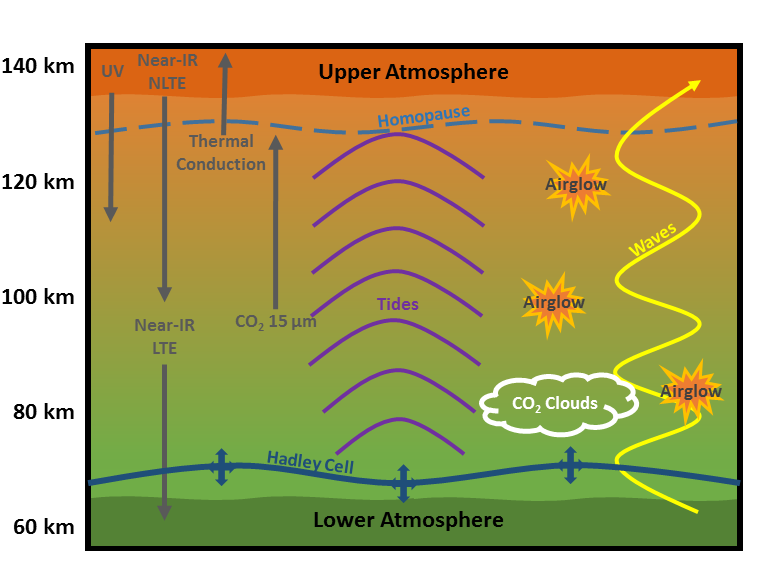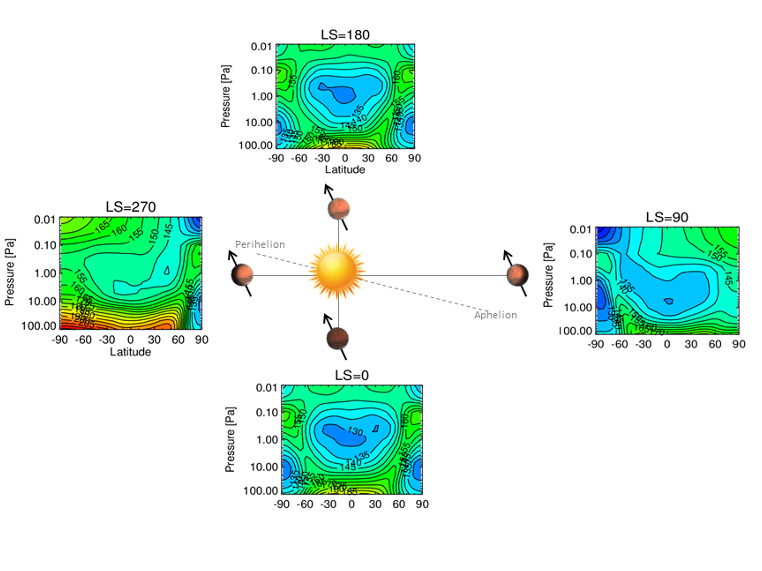The Ames GCMs have traditionally focused on science in the lower atmosphere. The model’s vertical domain typically extends up to an altitude of ~70 km and does not capture the full vertical domain of the middle atmosphere. Above 70 km but below the homopause (~120 km) is considered the middle atmosphere. This region is of great interest for understanding the connection between the lower and upper atmosphere. Currently, the Ames GCM is being modified in order to properly simulate the middle atmosphere.
From a lower-middle atmosphere connection point of view, Mars’ middle atmosphere (~70- ~120 km) and the lower atmosphere interact due to mechanisms such as: waves (e.g., gravity waves, planetary waves, and tides), dust storms, and the seasonal expansion/contraction of the atmosphere associated with the planet’s CO2 carbon-dioxide cycle. The middle atmosphere is also the region where the seasonally dependent upper branch of the overturning meridional circulation (i.e., Hadley cell) resides. The meridional circulation contributes to the distribution of chemical species (e.g. water, ozone, airglow emissions), the thermal structure (e.g. polar warming), and mesoscale clouds (H2O and CO2). Our understanding of the middle atmosphere and meridional circulation sensitivities can be improved by analyzing and comparing observables, such as chemical constituents, airglow emissions, and temperature, to simulations. The appropriate parameterizations are being incorporated into the NASA Ames Mars Global Climate Model (MGCM) to extend the vertical domain through the middle atmosphere (see Model Development).
Example Science Focus: Polar warming is a dynamically induced phenomenon that results from the compressional heating of air in the descending branch of the Hadley cell. It is characterized by a reversed (poleward) meridional temperature gradient in the middle-to-high latitudes during winter, spring, and fall. The study by McDunn et al. (2013) utilized the MRO/MCS-derived atmospheric temperatures to characterize the magnitude, structure, and seasonality of the Martian polar warming and identified seasonal trends in the polar warming behavior that have not been fully explored numerically. Understanding the seasonal forcing mechanism(s) of polar warming will help discern trends of other polar phenomena (e.g. nightglow emissions) and further, controlling processes of the net mean meridional circulation.






























